The post Chinese tea ceremony: Gongfu Tea first appeared on Blog Royal Tips.
]]>What does Gongfu Tea mean?
The term ‘Gongfu’ is used to mean a skill or activity that has been learned with great dedication over a long period of study. And so China’s Gongfu Tea Ceremony (also called Kung Fu Tea ceremony) is used to mean ‘brewing tea with great skill’. This quiet and controlled way of preparing tea in a Yixing pot or Gaiwan is thought to have developed during the 18th century, by which time loose leaf tea was in common use throughout China (earlier in Chinese history, caked tea and dried leaves had been ground to a fine powder and whisked into hot water).
What kind of water is used to make Gongfu tea?
The Gongfu tea brewing method lays great emphasis on two important elements involved in tea brewing – the type of water used and the temperature of that water. Chinese tea masters consider spring water to be the best for tea brewing as it is clean, full of natural minerals, and rich in oxygen. Some master brewers prefer to use bottled spring water but are careful to choose a type that does not contain added salts or other minerals that will adversely affect the taste of the tea. Distilled water and stale water are both rejected. And in most cases, tap water should be filtered to remove limescale, chlorine, and other pollutants that overwhelm the tea or inhibit the release of the tea’s full flavour and quality.
What types of tea are suitable for the Gongfu tea brewing ceremony?
The Gongfu tea method is not used to prepare white or green tea but is perfect for oolong and dark teas. The temperature for oolong teas should be around 95˚ C, and for Puerh and other dark teas, around 98˚ C. Chinese tea masters judge the temperature by the size of the bubbles in the water. At 75–85 °C, bubbles the size of ‘crab eyes’ (about 3mm) form; at 90–95 °C, ‘fish eye’ bubbles (about 8 mm) appear; when the water is near boiling, ‘rope of pearls’ bubbles become visible.
Gongfu tea accessories
To perform the ceremony, the tea master needs a brewing vessel (either a Yixing pot or a Gaiwan covered cup); a matching jug into which the tea is poured from the Gaiwan or teapot; a kettle; a brewing tray that allows water to drain away; a cloth for drying the bottom of pots and bowls; a dish for the tea; a scoop or spoon for delivering tea into the pot; a strainer through which to pour the tea from the Gaiwan or teapot into the jug; little bowls and saucers; small straight-sided aroma cups (optional).
Gongfu style tea brewing
To prepare the tea, the pot, jug, bowls and aroma cups are placed on the tray, and hot water is poured from the kettle over them all to cleanse them and warm them ready to receive the tea. While they are warming, the tea master shows to guests the dish of tea that is going to be brewed and the guests admire the colour and shape of the leaf. The tea master then empties the warming water from the teapot or Gaiwan and delivers the tea with the scoop into the empty, clean, hot vessel.
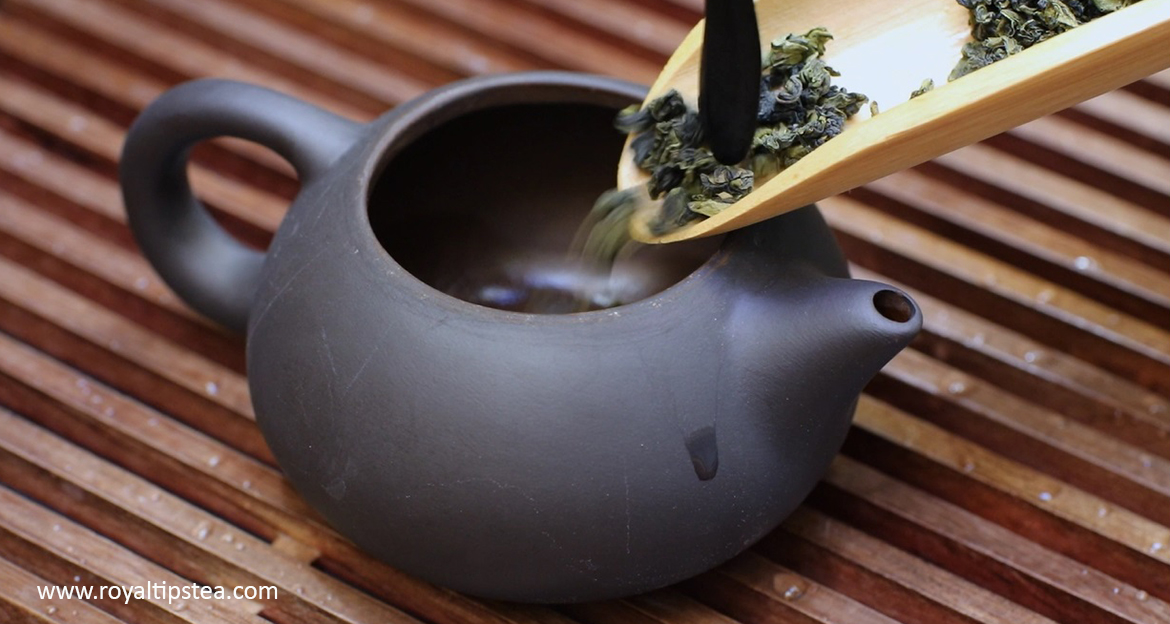
Water is then poured from the kettle at the correct temperature in a circular movement to ensure that all the tea is covered with water. The lid is placed onto the pot or the Gaiwan and, if using a Yixing pot more water is poured over the top to ensure no air is left inside the pot. Very often, depending on the tea, this first brew is a ‘wash’ or ‘rinse’ and the first water is poured away almost immediately. It is often used to warm the little bowls from which the tea will be dunk.
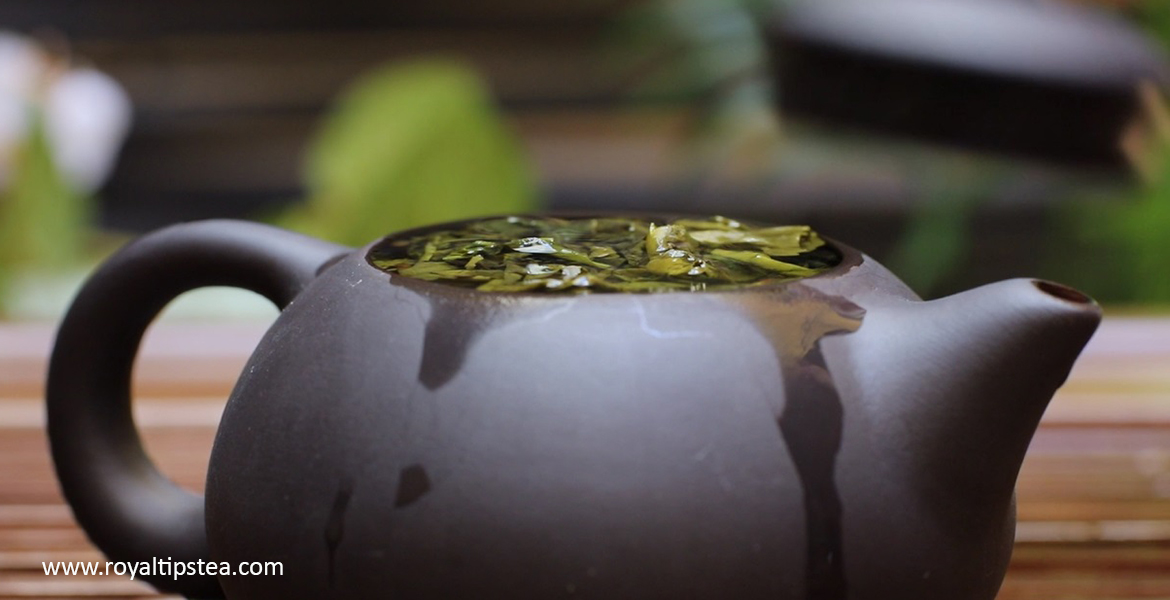
A second lot of water is then poured into the vessel and the tea is allowed to steep for a 10-15 seconds. The warming water is then poured out of the jug and the tea liquor is poured from the teapot or Gaiwan into the warmed jug. The warming water or hot tea liquor is emptied from the little bowls and the tea is poured into the bowls so that each cup has an even distribution of strength and flavor. If aroma cups are used, the liquor is poured first into the aroma cups, the aroma cups and bowls are placed on neat little saucers and are handed to guests. The drinker pours the tea from the aroma cup into the bowl and immediately enjoys the aroma held inside the aroma cup. The tea is then admired and tasted. Each bowl allows three sips of tea and guests should makes complimentary comments about the tea.
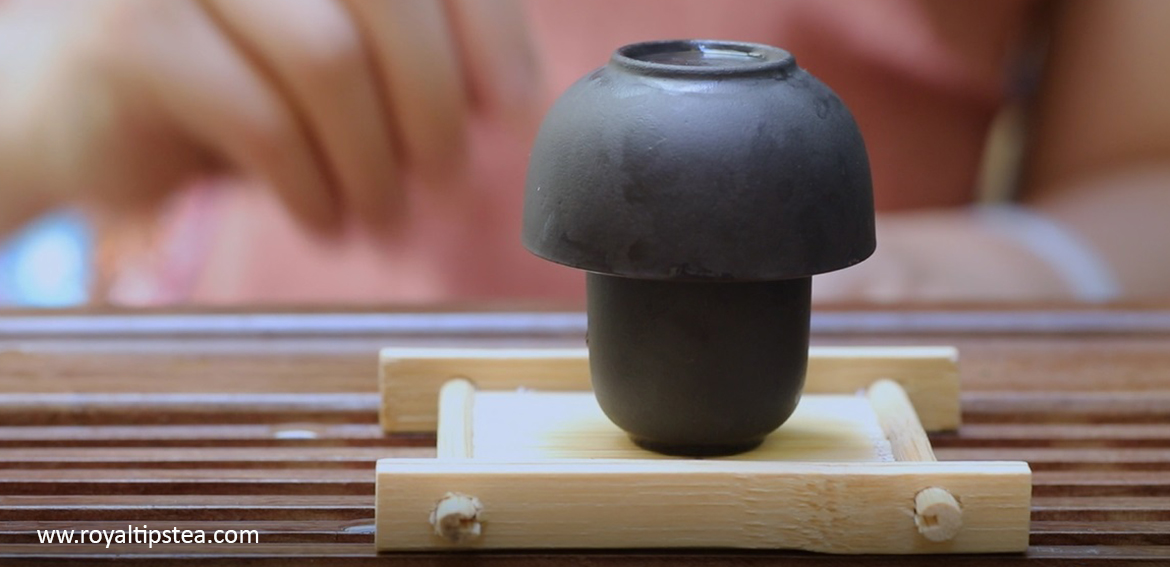
Gongfu Cha ceremony as a perfect way to practice relaxation
While the guests enjoy their first bowl of tea, the tea master brews a second pot of tea and repeats the procedure as many times as the tea continues to give flavour. The precious half hour or so that is spent enjoying a Gongfu tea ceremony creates a peaceful calm space in our busy lives. The hand movements used by the tea master are slow and graceful, and carefully choreographed almost like a dance. The silence is magical and allows everyone taking part to really focus on all aspects of the tea – the appearance of the dry leaves, the beauty of the brewing equipage, the aroma, colour and clarity of the liquor, the perfume of the wet tea inside the teapot, the quiet skill of the tea master, and the sense of companionship amongst everyone present.
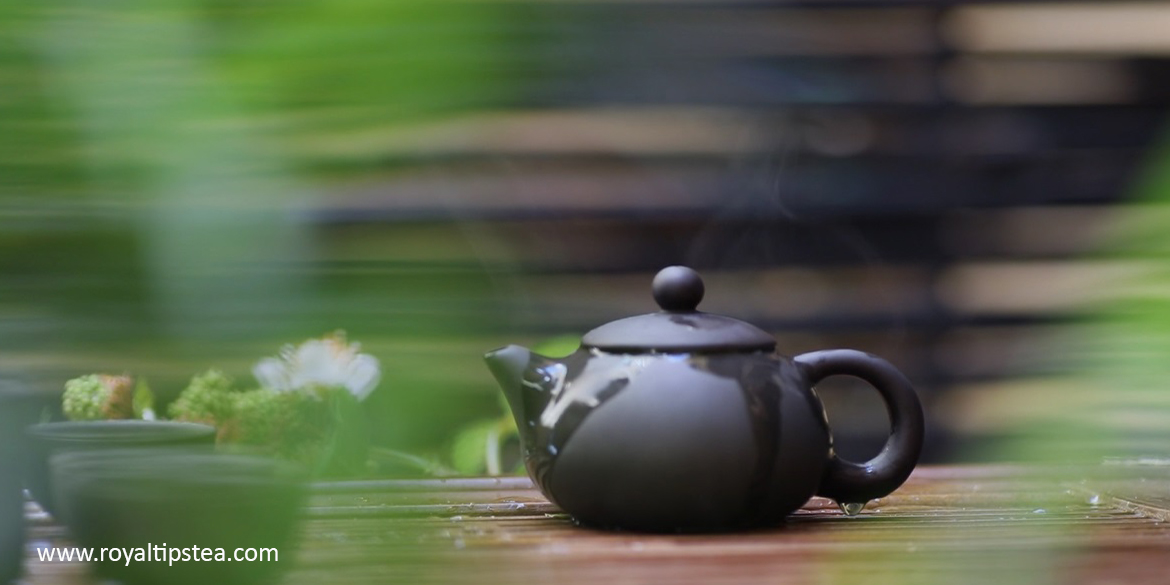
The post Chinese tea ceremony: Gongfu Tea first appeared on Blog Royal Tips.
]]>The post Why are Yixing teapots good to make tea? first appeared on Blog Royal Tips.
]]>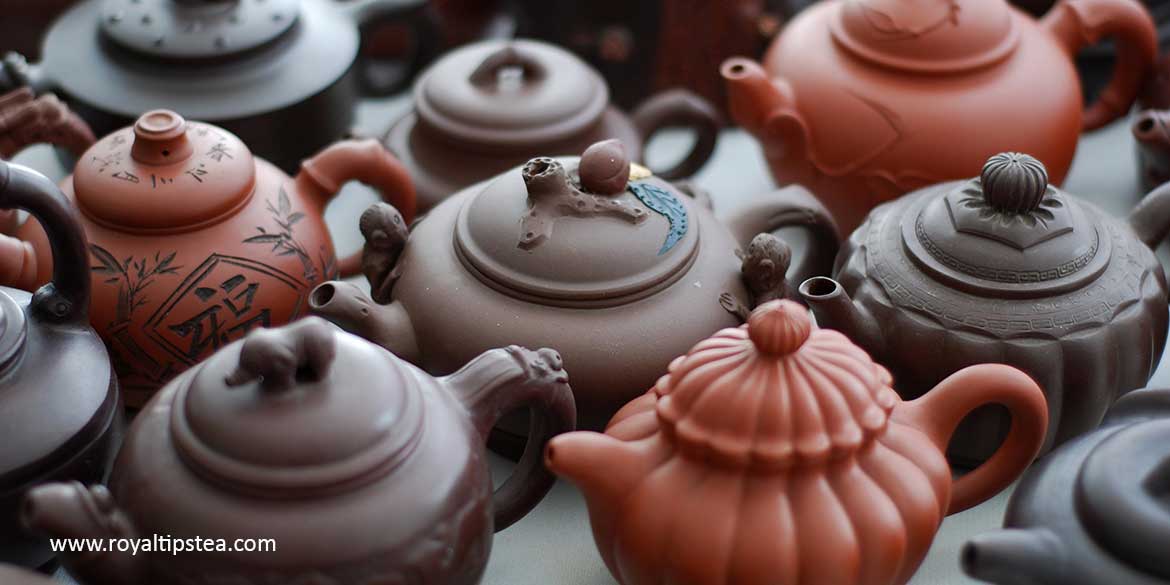
The quality of Yixing Zisha clay teapots
Unglazed earthenware Yixing teapots date back to the days of the Song Dynasty (960-1279 AD) and reached the height of their fame during the time of the Ming Emperors (1368–1644 AD). They are made in the town of Yixing (China), which lies close to Lake Tai in Jiangsu province, and the ‘zisha’ (purple) clay from the local hills has a special character and quality.
The colour of the zisha clay ranges from yellow and yellow-brown through red, red-brown, brown, purple-brown, green and black, and the mineral ingredients make it the best material for brewing loose leaf tea. Iron oxide gives the pots strength and an ability to maintain a stable temperature during brewing; other minerals – kaolinite, quartz, mica, hematite, and isinglass – make the teapot very porous and the tiny holes left in the pot after firing allow it to “breathe” during brewing and allow it to adapt to temperature changes during the brewing process. These characteristics help to draw out all the rich, complex layers of flavours from the tea.
What types of tea are brewed best in a Yixing pot?
Yixing teapot is never glazed for it is important that it remains porous. Yixing clay can be used for any type of tea but are particularly good for brewing Pu-erh teas and oolongs. Each zisha teapot should only be used for one particular type of tea (dark oolongs, cooked puerh, raw puerh, etc.) because the clay absorbs the tea oils as the leaves infuse. Each time the pot is used, extra layers of flavour are then added back into the water during brewing and give a smoothness and depth to the flavour of the tea. Some people prefer to use one individual pot not just for one category of teas but for just one individual tea – such as Mi Lan Dan Cong from Phoenix Mountains in China’s Guandong province, or Yan Cha rock oolong from the Wuyi Mountains.
Zisha teapot, a precios piece of Chinese art
Yixing teapots are always small and vary in size from a capacity of 70 ml to 225 ml. They can be very plain or are often made in the shape of other things – pumpkins, dragons, bundles of bamboo, turtles, a Buddhist priest, or a water lily pad topped with a little frog that forms the lid. And sometimes different clays are mixed to create a marbled effect. The teapots of high quality are made by hand, and skilled artists work the raw clay, craft and shape it by hand, cut the required pieces from slabs of the prepared clay, and mould them together to make the body. They then add the spout, the handle, the lid and any decorations on the surface.
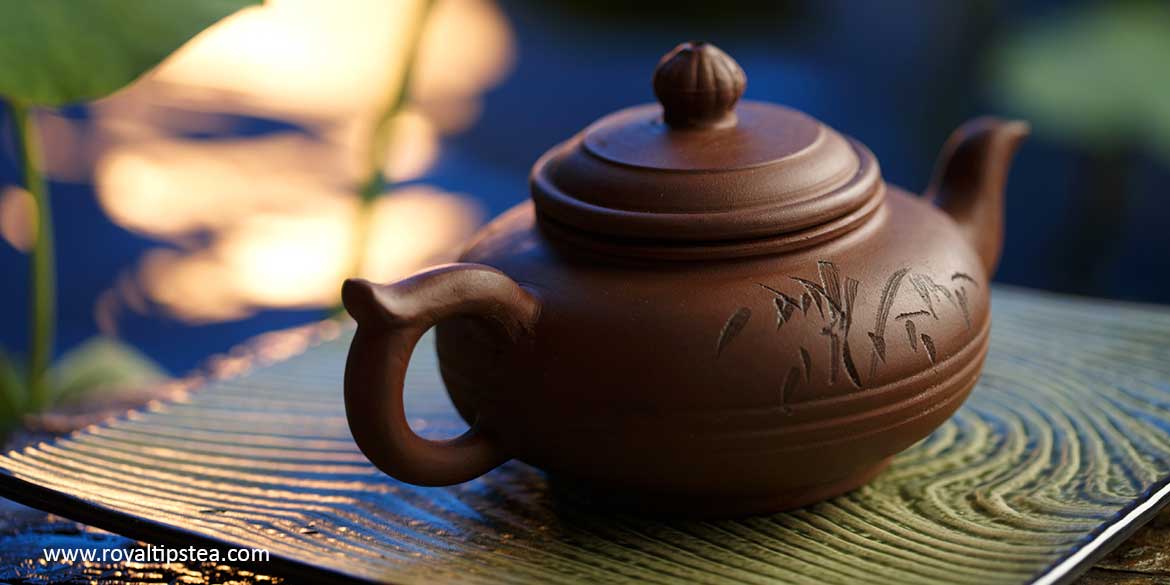
How to season a Yixing Teapot
When choosing a pot, think about the size you need for serving tea to, for example just one or two people, or to five or six people. Chose a shape and colour that pleases you and sits well with your other tea wares. Before using your pot to brew for the first time, you will need to season it.
1.Place the pot and lid in a large bowl or pan of cold water.
2. When it has soaked for a while, rub gently with a sponge of cloth that has no soap on it.
3. Using a mild, non-abrasive toothpaste and a toothbrush, scrub the pot all over to clean the surface thoroughly.
4. Rinse the pot in clean water.
5. Place the teapot and lid in a saucepan of clean cold water and place on the stove.
6. Bring the water to the boil and allow the pot and lid to remain in the gently simmering water for 10 0-15 minutes.
7. Carefully lift the teapot out of the water, drain and allow to cool. Do not plunge into cold water but allow to drain and cool naturally.
8. Pour some cold water into a pan and add a generous spoonful of dry leaves of the type of tea you plan to brew in the new pot. Bring the water and tea leaves to a gentle boil and carefully immerse the pot into the pan of tea. Switch off the heat, cover the pan and allow the pot to soak in the hot tea for at least 30 minutes or overnight.
9. Remove the pot from the pan, drain and allow to dry.
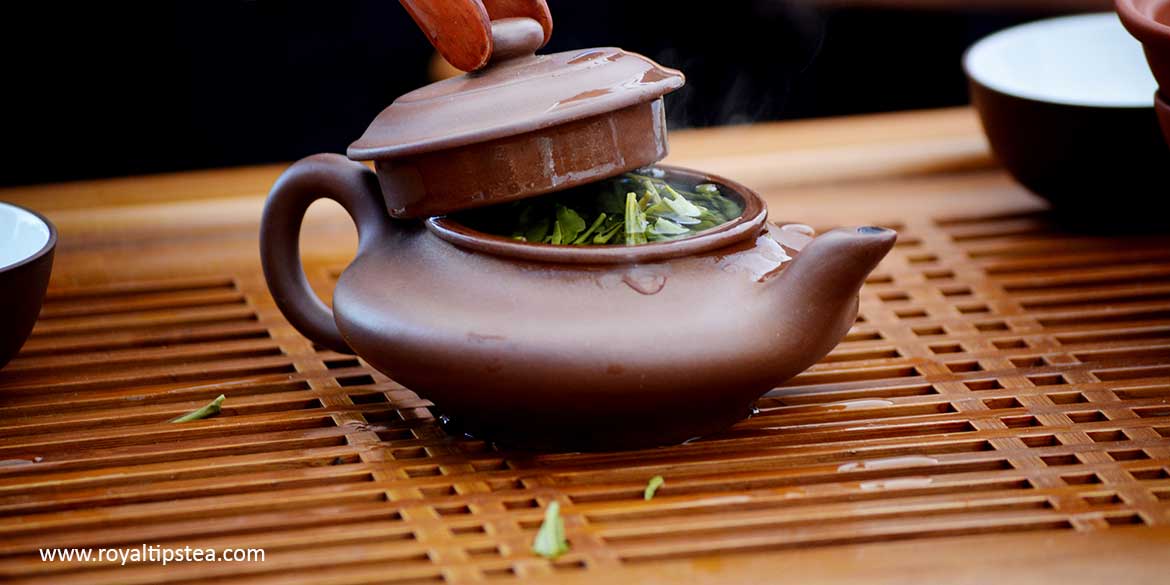
The post Why are Yixing teapots good to make tea? first appeared on Blog Royal Tips.
]]>